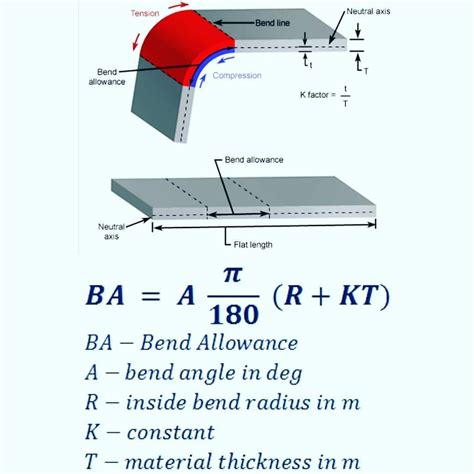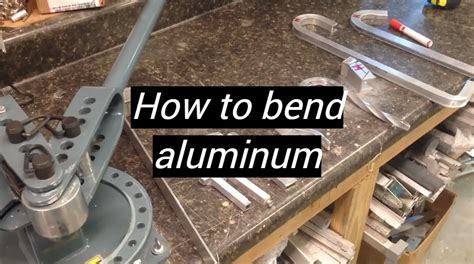aluminum for sheet metal bending A third factor to be considered is that formability of a specific alloy can be found in the percentage of elongation and the difference between yield strength and ultimate tensile strength. This rule states that the higher the elongation value (the wider the range . See more $8.80
0 · thickest aluminum sheet metal bending
1 · is aluminum easy to bend
2 · best way to bend aluminum
3 · best aluminum grade for bending
4 · bending aluminum sheet by hand
5 · bending aluminum pipe by hand
6 · bending 3003 aluminum sheet metal
7 · bending 1 8 aluminum plate
$249.99
In high purity forms, aluminum is soft and ductile. Bending is a delicate and demanding process most of the time and common fabricating processes require a degree of formability that make your choice of proper alloy critical. Depending on designation, alloys go through different heat treatment . See more
To understand this better, we need to talk about alloys, which is the first factor to consider upon selection. In aluminum, we have various designations that all have different chemical . See moreAnother factor to consider is that during the process of bending, the metal hardens and strengthens by reason of the working effect. Apart from . See more
If you’d like to know more about bending specific alloys or which alloy is best for your application, please contact our sales department by calling 800-826-3370. See moreA third factor to be considered is that formability of a specific alloy can be found in the percentage of elongation and the difference between yield strength and ultimate tensile strength. This rule states that the higher the elongation value (the wider the range . See more
Ideally, part designers should know that when it comes to aluminum grades, 3003 and 5052 will bend, 6061 will not. This is generalizing, of course, as there are ways to form 6061. The aluminum series’ ability to bend .This Komaspec guide provides an overview of the main sheet metal bending processes, the advantages and disadvantages of each, basic design considerations with sheet metal bending ."Which aluminum alloy bends the best?" is a a common question customers want the answer to. In this post, we'll explain it to you. Background In high purity forms, aluminum is soft and ductile. Bending is a delicate and demanding process most of the time and common fabricating processes require a degree of formability that Ideally, part designers should know that when it comes to aluminum grades, 3003 and 5052 will bend, 6061 will not. This is generalizing, of course, as there are ways to form 6061. The aluminum series’ ability to bend tends to decrease as you move down the list of tempers, from annealed to T4 and T6.
This Komaspec guide provides an overview of the main sheet metal bending processes, the advantages and disadvantages of each, basic design considerations with sheet metal bending and material selection information.
Aluminum 6061-T6 is notoriously difficult to bend, but skilled press brake operators can tackle the challenges with various strategies, including torch annealing.6061 Aluminum: Miserable to bend, cracking is very common and cold bending will always weaken the metal. Proper bending can be done with annealing the aluminum first, although it’s not an ideal candidate for formed parts. 5052 Aluminum: Highly formable, and one of the best kinds of aluminum to bend.Bending metal to a small bend radius has the potential to cause tearing or cracking. The Fabricator offers certain key tables and general rules which are helpful for understanding the limits to bendability for specific aluminum alloys.
One of the most useful characteristics of aluminium is its formability, and one way to form the metal into the shape you want is through bending. Some aluminium alloys and tempers are better suited for bending than others. This is what you need to know to choose the one that's right for you.
There are a couple standard ways of bending aluminum, depending on the form you’re working with. When bending large sheets, your best bet is to use a metal bending brake, or to improvise one using a sturdy tabletop and a length of scrap wood.The top 3 aluminum alloys for bending are the 3003 which has medium strength and the best cold workability, the 5052 which is the highest strength alloy of the more common non-heat treatable grades, and the 6061 which is one of the more versatile heat-treatable alloys. During aluminum bending, you will transform the material into various shapes using mechanical force. This guide looks at fundamental aspects to consider when bending aluminum such as suitable alloys, factors affecting bending process, bending techniques, to application. So, before starting your next project, read this guide."Which aluminum alloy bends the best?" is a a common question customers want the answer to. In this post, we'll explain it to you. Background In high purity forms, aluminum is soft and ductile. Bending is a delicate and demanding process most of the time and common fabricating processes require a degree of formability that
Ideally, part designers should know that when it comes to aluminum grades, 3003 and 5052 will bend, 6061 will not. This is generalizing, of course, as there are ways to form 6061. The aluminum series’ ability to bend tends to decrease as you move down the list of tempers, from annealed to T4 and T6.This Komaspec guide provides an overview of the main sheet metal bending processes, the advantages and disadvantages of each, basic design considerations with sheet metal bending and material selection information. Aluminum 6061-T6 is notoriously difficult to bend, but skilled press brake operators can tackle the challenges with various strategies, including torch annealing.
junction box for 30 amp 3 wire socket home depot
6061 Aluminum: Miserable to bend, cracking is very common and cold bending will always weaken the metal. Proper bending can be done with annealing the aluminum first, although it’s not an ideal candidate for formed parts. 5052 Aluminum: Highly formable, and one of the best kinds of aluminum to bend.Bending metal to a small bend radius has the potential to cause tearing or cracking. The Fabricator offers certain key tables and general rules which are helpful for understanding the limits to bendability for specific aluminum alloys. One of the most useful characteristics of aluminium is its formability, and one way to form the metal into the shape you want is through bending. Some aluminium alloys and tempers are better suited for bending than others. This is what you need to know to choose the one that's right for you. There are a couple standard ways of bending aluminum, depending on the form you’re working with. When bending large sheets, your best bet is to use a metal bending brake, or to improvise one using a sturdy tabletop and a length of scrap wood.
The top 3 aluminum alloys for bending are the 3003 which has medium strength and the best cold workability, the 5052 which is the highest strength alloy of the more common non-heat treatable grades, and the 6061 which is one of the more versatile heat-treatable alloys.

thickest aluminum sheet metal bending

10000+ "epic creature box" printable 3D Models. Every Day new 3D Models from all over the World. Click to find the best Results for epic creature box Models for your 3D Printer.
aluminum for sheet metal bending|bending 3003 aluminum sheet metal